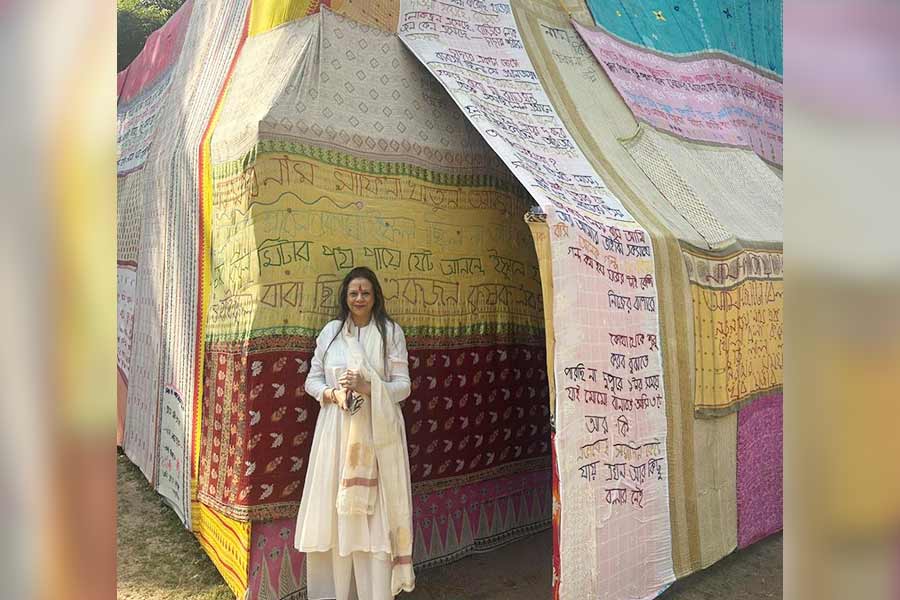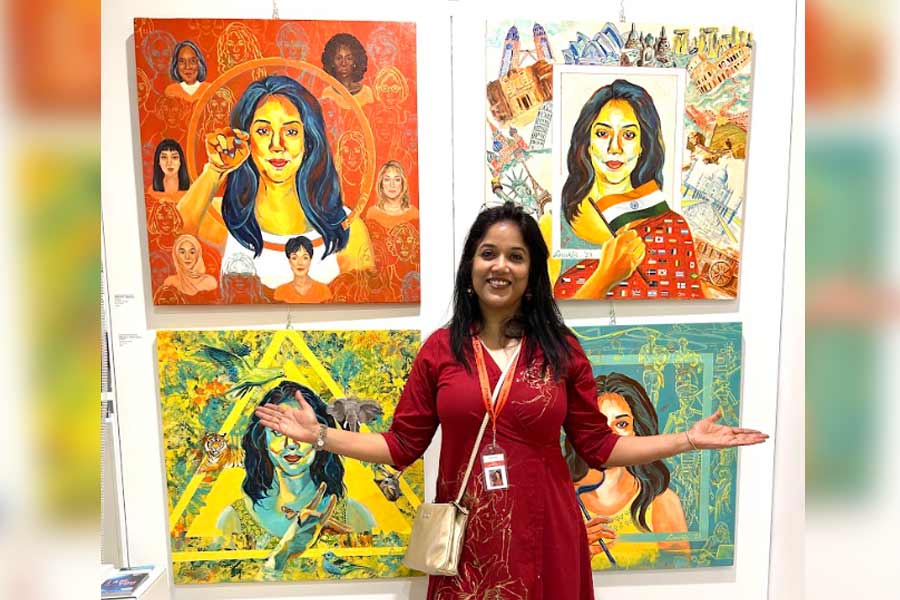Serendipitously, we are in Venice, as the curtains are about to come down on the 60th Venice Biennale. It enthralled visitors over the last few months, now there was an air of sadness as the participants prepared to wind up and head back.
Back home, in Kolkata, I was just in time to witness the stage being set for the first Bengal Biennale, in Santiniketan and Kolkata, in November-December. If ‘Foreigners Everywhere’ was the theme for Venice, in Bengal, there was a sense of homecoming in the exhibitions coming up across venues.
‘Anka-Banka: Through Cross-Currents’ casts a contemporary gaze within Bengal’s enduring ethos of cultural exchange and intellectual pursuit, urging us not only to ponder our histories, but engage with the present and envision new horizons. It crafts an inclusive, immersive art experience, spotlighting the works of masters, amplifying under-represented voices, nurturing emerging talents, and fortifying the art ecosystem: hoping to leave a lasting imprint on Bengal’s artistic landscape and beyond.’
As Siddharth Sivakumar writes further in his curatorial brief, the Bengal Biennale celebrates this cross-cultural exchange involving not only the masters like Rabindranath Tagore, but also relatively newer and younger practitioners into its sphere. Nowhere is this more evident than in Santiniketan, where we find ourselves on a pleasantly chilly winter’s day, when the Biennale has just opened its doors at the venues, which, in some cases, are led though the ‘anka-banka’ paths of Santhal villages.

A work by Samit Das
Our day-long journey from Delhi to Kolkata and finally Santiniketan has been arduous, but as we stand before the magnificent exhibition of Rabindranath Tagore at Nandan, we are spellbound — all tiredness forgotten. I am fleetingly reminded of our exhibition at the same space in 1998, an exhibition of Manjit Bawa’s miniatures on the first floor of Nandan, which senior artists, including KG Subramanyan and Somenath Hore had attended.
The gallery is nearly empty this evening, as the closing hour approaches and we are able to make most of this quietude by pausing before each work, among them many we have never seen before, like the ceramic pot. We have Sushobhon Adhikari with us who gives us an informal walkthrough — drawing our attention to Rabindranath’s practice of transforming errant lines into expressive doodles. We ponder over the curator Sivakumar’s words: ‘While painting, he drew upon the innate sense of form, proportion and rhythm he had developed as a consummate penman and musician and combined it with a keen sense of colours to achieve effective expression.’
Our next stop is SVVAD, where Sudhir Patwardhan is showing ‘Fragments of Belonging’, featuring early sketches alongside the well-known figurative explorations of a teeming metropolis and its working class as they toil tirelessly to make a living. Patwardhan had recently spoken to me about this show, when he was showing ‘Cities: Built, Broken’ in London, excited that he was going to share a body of his works in Santiniketan where some of his favourite artists like Benode Bihari Mukherjee were once based.
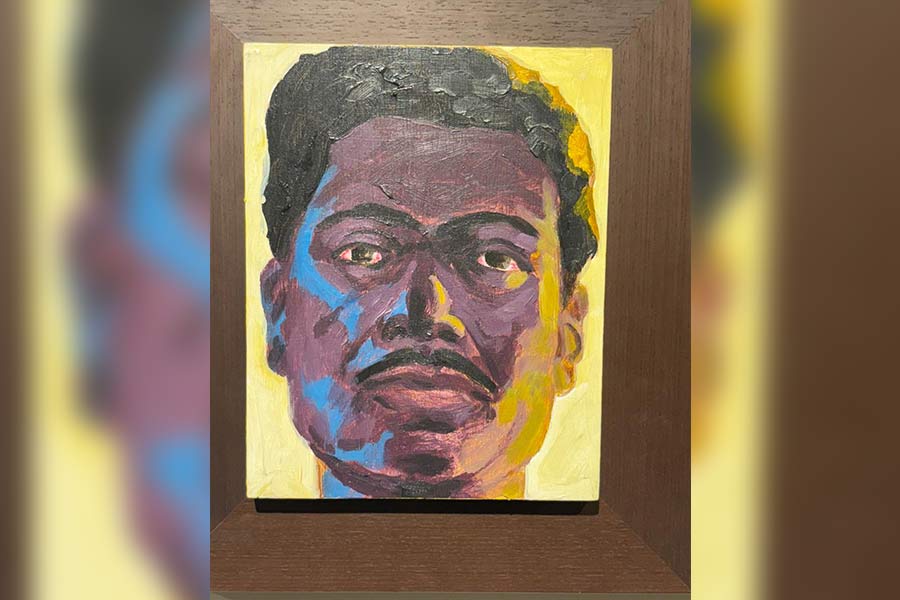
A work by Sudhir Patwardhan
I see a group of students pausing before some paintings, curious to learn more about this veteran painter whose empathy for his environment, as well as the inner lives of the people who inhabit them, were as well known as his visceral realism. There is a whispered exchange and as we walk out in the dusk, we can hear the voices linger, the discourse clearly nowhere over.
As the dusk deepens, we make our way to Somenath Hore’s studio, where Archana Hande has curated ‘Imprint’ with the works of Reba Hore, Somenath Hore, The Realist Group, Archana Hande and Samit Das. For the group, printmaking is a collective expression of solidarity against the commodification of global capitalism. The night is dark and shifting shadows created by Archana Hande’s works create scenes that are like a visual meditation of geometric proportions. In Lalbandh, the newly white-washed walls of the studio bear Somenath Hore’s name. And while he is no more, it is only fitting that the space is used to present a show whose ideology echoes the artist’s own philosophy.

The shifting shadows created by Archana Hande’s works create scenes that are like a visual meditation of geometric proportions
Our anka-banka route takes us next to Pearson Palli, where Mithu Sen and Sanyasi Lohar have collaborated on a project that speaks in a deeply personal voice and is composed of Ol Chiki script, the written form of the Santhali language developed by Raghunath Murmu. In the words of Mithu Sen, an alumnus of Viswa Bharati University, the murals do not merely preserve heritage, but act as visual activism, reclaiming histories and challenging narratives of erasure. Distributed to the Santhal community during the Bengal Biennale, it serves as both a lifeline and a promise to amplify the Ol Chiki script. As we explore the walls and façade of the hamlet with villagers offering a commentary on how proud they feel to be a part of the Biennale, what comes across time and again, through the week I am there, is the fierce sense of pride and ownership.
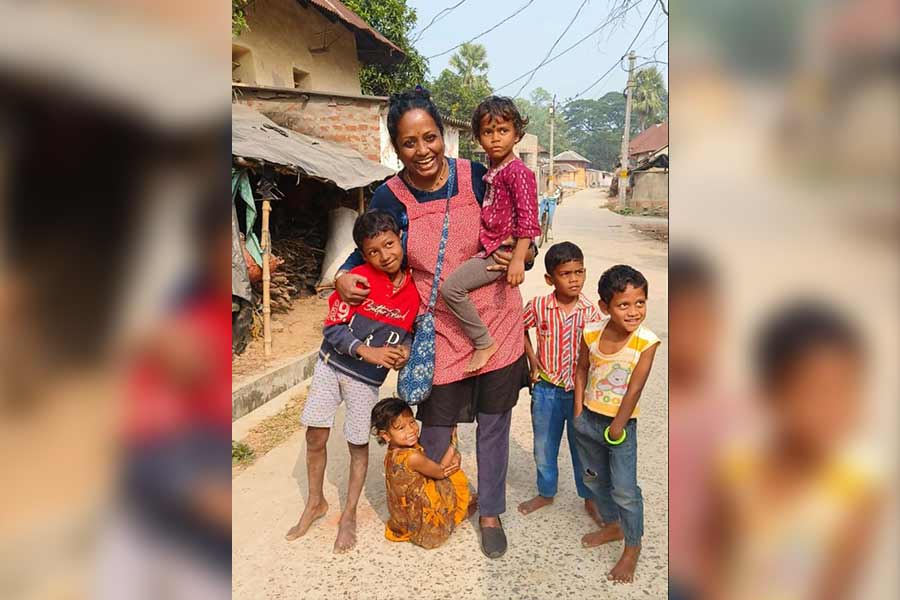
Mithu Sen at Pearson Palli
It is by now long past the closing hour, but everywhere we go, we are welcomed, the caretakers who are sweeping out the spaces eager for us to take a look at the exhibitions. The volunteers are equally helpful and that makes navigating across the winding paths possible. The scroll outside Potthead Studio informs us that we have reached Mahesh Baliga’s ‘Tracing Footprints on Fading Ground’ — the works draw the viewer in and we refer to the curator’s notes to get a deeper sense of the project. Writes Sivakumar: ‘His recent works are subtle, where critiques are implied and observations heightened, yet confrontation kept at bay. His explorations of Santiniketan echo a film buff’s pilgrimage to sites from beloved scenes, only to find the enchantment waning in daylight.’
These interesting cross-cultural encounters between the artists make the Bengal Biennale so distinctive. This feeling is reiterated when we see ‘A Star Named Arundhati’, curated splendidly by Tapati Guha Thakurta and Mrinalini Vasudevan at Arthashila. We are treated to photographs from rare archives and see a luminously beautiful actor holding her own beside the top leading men of the day. Photographs and video clippings bring alive a radiant personality who was a successful Bengal film actor, director and producer from 1924 to 1990. ‘She carved out her own space in a largely male-dominated landscapes,bringing worth to the fields of art and entertainment that were often associated with only commercial leanings and not respectability.’
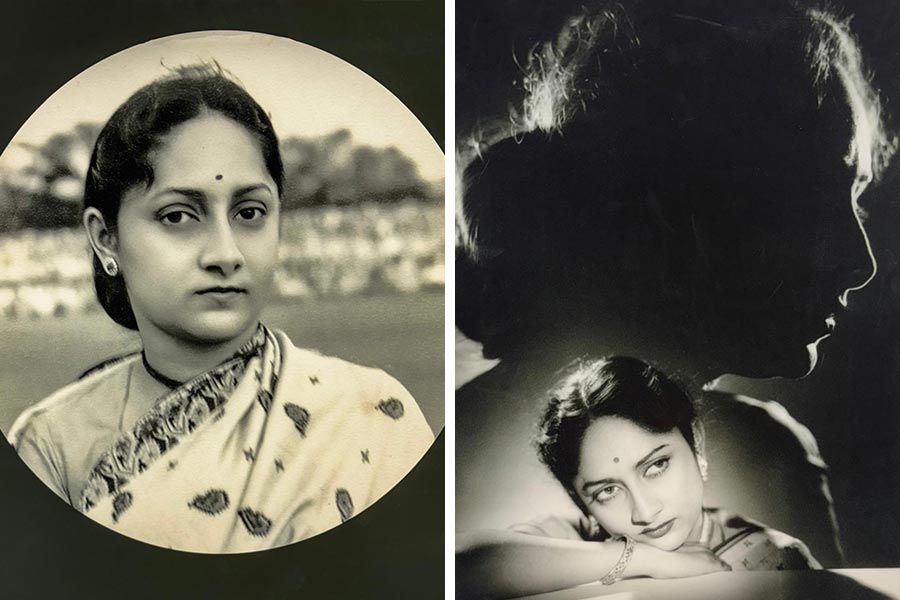
Glimpses from ‘A Star Named Arundhati’
In the area of cinema, ‘Icons in Focus’ featured the photographs of Nemai Ghosh and Satyaki Ghosh as they shot two stalwarts of world cinema — Satyajit Ray and Mrinal Sen. Being a textile enthusiast, I loved the installation ‘Kanthar Ghar’ by Rabiul Khan, Surajit Mudi, Ritusree Mondal and Himangshu Sarma (GABAA). While we made every effort to see the exhibitions of TV Santosh, Abhijit Vinayak Banerjee and Sarnath Banerjee the next morning, the galleries were closed and we had a train to catch.
We were headed to the Kolkata leg of the biennale. For now, I must congratulate the curator Siddharth Sivakumar and the Gameplan Team, Malavika and Jeet Banerjee, both for their audacious initiative and for pulling it off with such finesse.
